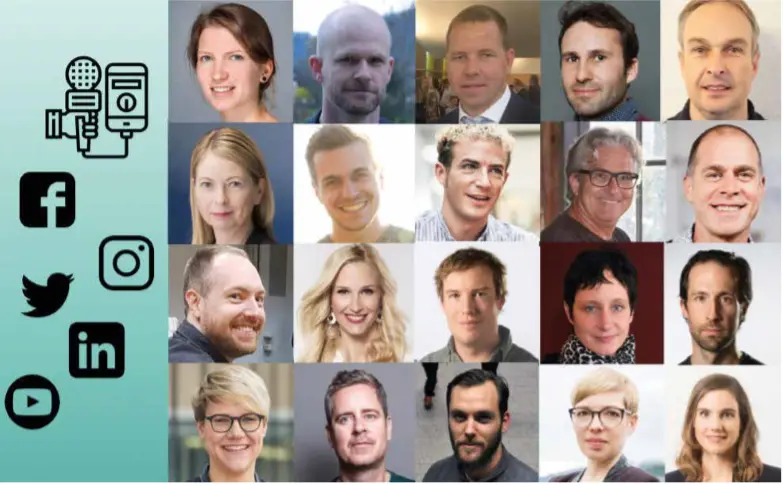Study «Journalism in the Web 2019»: Social media sets both the pace and the agenda
Social media has become an indispensable tool in journalism. Despite this central role, however, journalists retain a certain scepticism regarding the quality and reliability of social media sources, and they are ambivalent about using them in publications or for communicating with their readership. In a series of some 60 interviews that began in 2015, Swiss journalists provided information on how they use social media in their work. Now, a new publication presents the results of the study as well as recommendations for media and communications professionals.

From July to December 2019, Bernet Relations and the IAM Institute of Applied Media Studies at the ZHAW held the third round of qualitative interviews with 20 Swiss journalists. The survey focused on research, publication and dialogue. In addition, the journalists were asked about how they organise their social media activities. As in earlier surveys, the ambivalence of the journalists is apparent. “Journalists appreciate the value of social media and are fascinated by its possibilities," said Guido Keel academic head of the study at the IAM. "At the same time, they wish they could rely on it less.”
Research: monitoring topics and quality of sources
Nearly all media professionals say they use social media mainly for research; they also believe that social media sources can provide key information about the relevance of an event. Facebook and Instagram accounts are particularly useful for conducting background research on interviewees in sports or celebrity journalism. Fact-checking with media colleagues helps to ensure that the information provided by a source is relevant and correct. However, no new rules have been defined for assessing the veracity of a source for information found on social media, and most journalists surveyed believe it is problematic to rely entirely on social media sources.
Publication: going viral and Twitter bubbles
Media professionals make targeted use of social media channels to draw attention to other articles and sources of information. In addition, the geographic and demographic reach of journalists is greater thanks to social media. Still, it remains difficult to pinpoint why one story generates more online interest than another. As one interviewee said: “I have the feeling that you can interpret a great deal into the question of what works on social media.” Journalists are also avid followers of other journalists’ Twitter accounts, which contributes to a certain bubble effect.
Dialogue: between phone calls and trolls
Whether and how journalists use social media to enter into a dialogue with their readers varies across the different type of media. Some interviewees use discussions with their readers to create follow-up stories, while others see online discussions more as a one-way street. All, however, agree that the truly relevant discussions take place elsewhere. “Contact is initiated on Facebook or Twitter, but as soon as more information is needed the journalists engage their sources in a direct conversation,” says Irène Messerli of Bernet Relations and co-editor of the study report. The ugly phenomenon of trolls and incendiary comments is familiar to all journalists surveyed, whose most common strategy is to ignore them. Nevertheless, experience has shown that the tone often normalises when a journalist reaches out and engages in a digital dialogue.
For journalists and communications professionals
Communications professionals and journalists say they value social media as it allows them to communicate with people in a quick and uncomplicated manner – and without having to respond straight away. But they also say it cannot replace a face-to-face meeting. With increased time pressure and the massive number of online sources, however, media conferences and events are becoming less popular.
Media professionals are very willing to embrace new online sources and forms of information. As such, experts and corporate influencers are gaining significance as a new journalistic source. “Tight deadlines mean that journalists often don’t leave their desks any more – they can find interesting and relevant background information via social media,” says Dominik Allemann of Bernet Relations and co-editor of the study report. “This provides communications professionals and experts from businesses with the opportunity to stand out with innovative formats of information and exchange.”
The study, which contains profiles of journalists as well as recommendations for journalists and PR professionals, is now available in various formats from the publishing house buch & netz: https://buchundnetz.com/werke/journalistenimweb2019/
Contact:
dominik.allemann@bernet.ch
irene.messerli@bernet.ch
+41 44 266 90 80
or
guido.keel@zhaw.ch
+41 58 934 77 65
Bernet Relations advises clients in IT, services, education, finance, administration and the non-profit sector on communications strategy and implementation. The team at Bernet Relations, led by Irène Messerli and Dominik Allemann, are helping to further develop the field of communications with their bernet.blog (launched in 2005), checklists and publications. This is their fourth study on social media and the eleventh Bernet research project.
https://bernet.ch/en/knowledge/
The IAM Institute of Applied Media Studies at the ZHAW has been promoting professionalism in journalism and corporate communications since its foundation in 2000. IAM pursues the overarching goals of the university: education, continuing education, research and consulting.
www.zhaw.ch/linguistik/iam